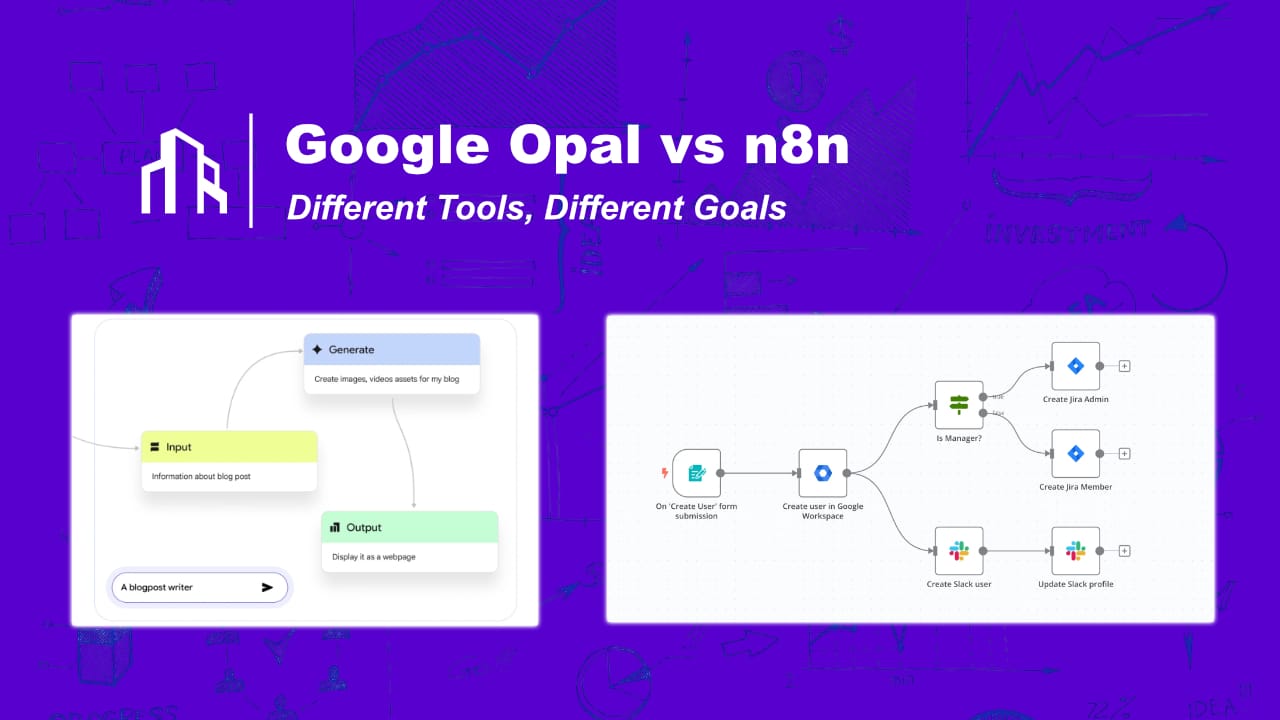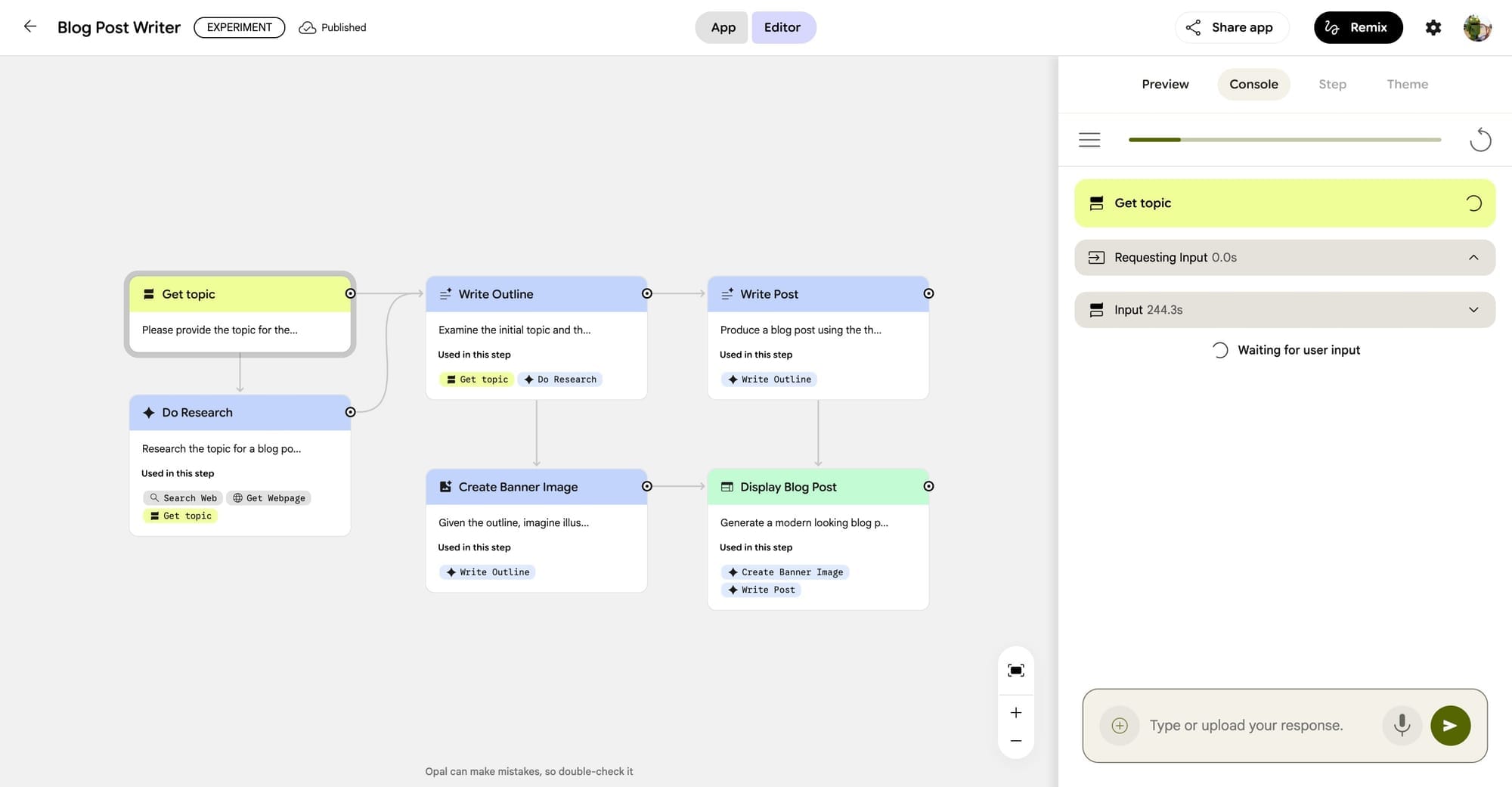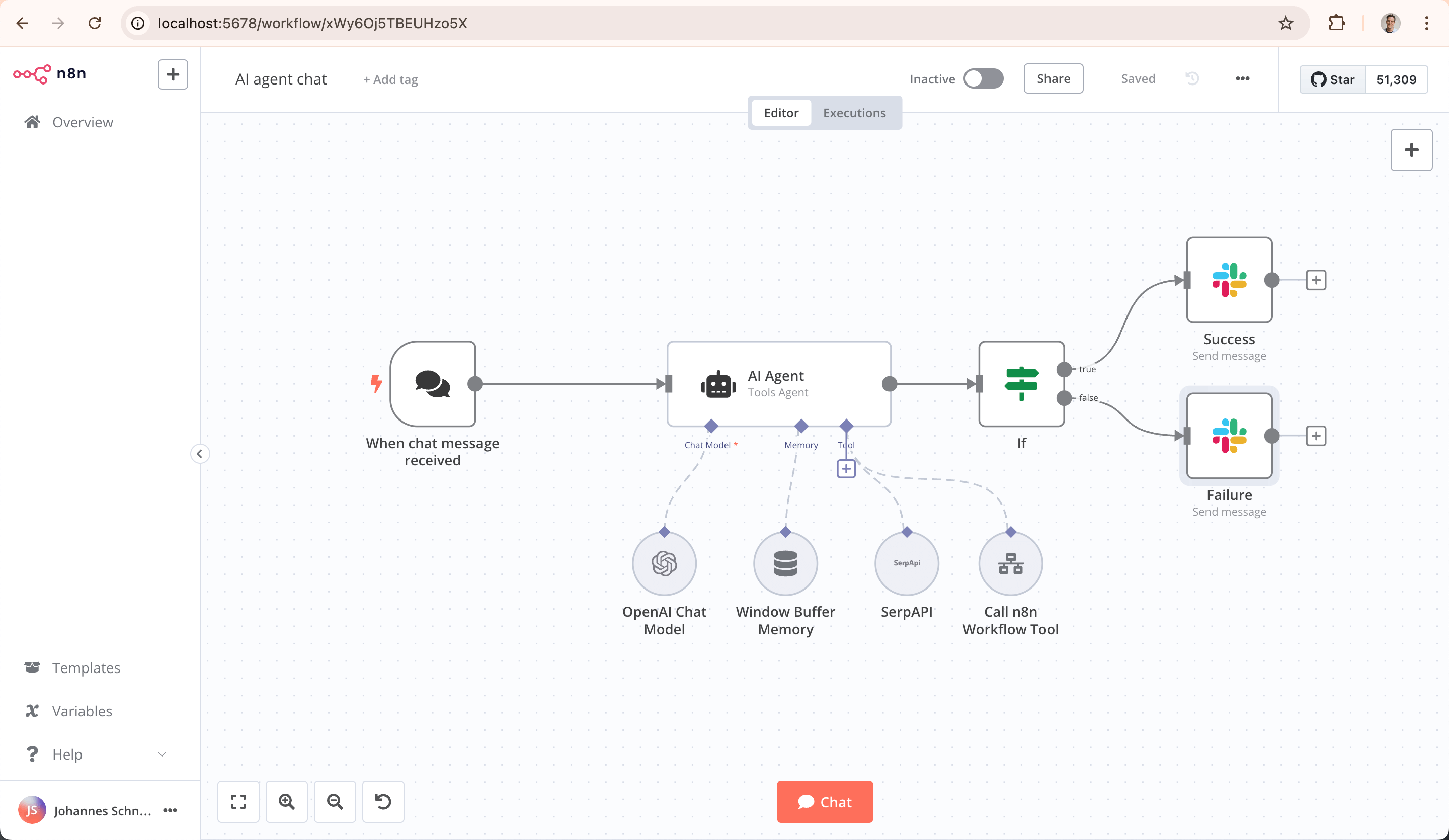Google Opal vs n8n: Different Tools, Different Goals

Google recently unveiled Opal, a no-code experiment that promises to turn plain language into small AI apps. The buzz is strong: some call it a Zapier or n8n competitor, others see it as Google’s attempt to simplify automation for everyone.
But here’s the real question: is Google Opal actually comparable to n8n? And if so, when does it make sense to use one, the other, or even both together?
This article breaks it down, without the hype.
What is Google Opal?
Google Opal is currently in public beta, available only in the US, and positioned as a lightweight AI app builder.
- You describe what you want in natural language.
- Opal generates a mini-workflow with nodes like Input → AI Model → Output.
- You can refine it by editing visually or by conversing with the system.
- A template gallery helps you “remix” common scenarios.
In short: Opal is fast, simple, experimental, and built for prototyping and ideation rather than production-grade automation.

What is n8n?
n8n is an open-source workflow automation platform used by startups, agencies, and enterprises worldwide.
- 400+ integrations with SaaS platforms, APIs, and databases.
- Visual workflow builder with the option to insert custom JavaScript.
- Can be self-hosted for full control over security and compliance.
- Suitable for production environments with logging, error handling, and scalability.
In short: n8n is flexible, robust, and enterprise-ready. It’s not built for one-click prototypes, but for real automation that scales.

Opal vs n8n: A Side-by-Side Comparison
| Factor | Google Opal | n8n |
|---|---|---|
| Ease of use | Natural language + drag-and-drop, ideal for non-developers | Visual workflows, but requires understanding of APIs and data |
| Purpose | Prototyping, experimenting, quick demos | Production automation, integrations, enterprise logic |
| Hosting | Fully managed by Google, beta product | Self-hosted or cloud, full control |
| Flexibility | Limited to templates and built-in AI functions | Full integrations, custom code, advanced logic |
| Risk | Experimental, uncertain future | Stable, growing open-source ecosystem |
Why They Are Not the Same
On the surface, both tools show nodes and workflows. But that’s where the similarity ends.
- Opal lowers the barrier for non-technical users to play with AI workflows.
- n8n provides the infrastructure for businesses to actually run mission-critical processes.
It’s less “Opal vs n8n” and more “Opal for ideas, n8n for execution.”
Can They Work Together?
Absolutely. Imagine this scenario:
- A marketing manager uses Opal to create a quick AI assistant that summarizes customer feedback.
- Instead of keeping it in Opal, the output is sent via webhook.
- n8n picks it up, enriches the data, pushes it to a CRM, and triggers follow-up actions like Slack alerts.
In this way, Opal acts as a front-end experiment tool, while n8n becomes the back-end automation engine.
Risks to Keep in Mind
For companies considering Opal:
- Data control: all flows run inside Google’s environment. Compliance might be an issue.
- Longevity: many Google Labs products never graduate. Betting on Opal for core processes is risky.
- Lock-in: what you build in Opal today may not migrate easily to another tool tomorrow.
For n8n:
- Learning curve: you need some technical understanding. Non-technical staff may need training.
- Hosting overhead: self-hosting means handling updates and infrastructure.
When to Use Which
- Use Opal when you need fast, low-cost prototyping or when you want to show a proof of concept to stakeholders.
- Use n8n when you need serious automation, compliance, and long-term reliability.
- Use both when you want to combine Opal’s front-end creativity with n8n’s production-grade back-end power.
Conclusion
Google Opal is not a replacement for n8n. It’s a different tool with a different purpose.
- If you’re curious, Opal is worth testing as a lightweight AI sandbox.
- If you need automation that scales and integrates deeply with your stack, n8n is the clear choice.
- The smartest move? Recognize where each tool fits and don’t confuse experimentation with execution.
At Scalevise, we help companies separate hype from reality. Whether you want to experiment with emerging AI tools like Opal, or build rock-solid automations with n8n, we design the architecture that fits your business.
